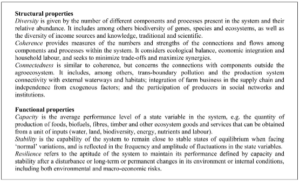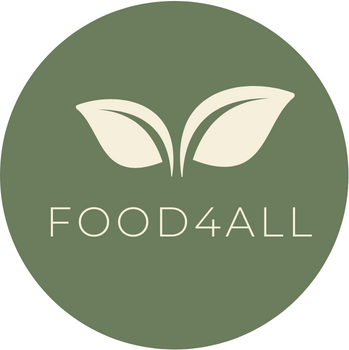An important prerequisite for effective identification of relevant properties is the definition and conceptualization of the system. For the purpose of the discussion here a system is defined as a collection of components that can be characterized by state variables that represent a certain quantity (stock) or value at a given moment or integrated over a given period such as a growing season or a year. Changes in the state variables represent flows between the external environment and the system, or among system components. Examples of state variables typical for the four dimensions are amounts of available water and nutrients (physical); herbage biomass and mass of animals (ecological); harvested crop and milk produced (productive); number of family members (social). The level of aggregation per state (e.g., total herbage biomass vs. biomass per plant species) should be determined for each specific case, and depends on the scale of analysis and the issue at stake (Grimm et al., 1992). The state variables are dynamic, subject to change through time due to flows of matter, energy, money, and information between the system components, and between the system and its surroundings. Possible approaches for representation and quantitative analysis of such a system and interactions with the environment outside the system include use of a network perspective (Gattie et al., 2007) or a flow analysis (Hannon et al., 1991).
Properties of agroecosystems can be classified into two main categories of structural and functional properties (Fig. 3). The structural properties of diversity, coherence, and connectedness express the composition of an agroecosystem in terms of components and processes and their interrelations or the relations with the environment outside the boundaries of the system under analysis. Structural properties determine the functional responses of the system (like the engine of a car), and are particularly relevant to understand the mechanisms that govern agroecosystem performance (Ives and Carpenter, 2007), and to identify possible changes in the system to improve its sustainability. Diversity is related to the number of different components and processes present and their relative abundance, whereas coherence provides measures of the numbers and strengths of the connections among components and processes within the system. In some instances diversity and coherence have been combined in a term referred to as “complexity” (Okey, 1996). Connectedness is similar to coherence, but concerns the connections with entities outside the system. Coherence and connectedness can typically be quantified using network and flow analyses. Monitoring of the flows within the system and thus coherence through time in relation to disturbances can be used to determine the capability of the system for adaptation, self-organization and for maintaining its integrity. From an analysis of connectedness, self-dependence and efficiency of the system could be determined, which refers to the degree to which the inputs or resources native to the system contribute to its functioning and maintenance of the structure (Xu and Mage, 2001).

Fig.3 Agroecosystem properties of the conceptual framework for sustainability assessment of land use options. Modified from El-Hage Scialabba, N., Pacini, C. and Moller, S. (2014). Smallholder ecologies. Rome, Italy: FAO.
An agroecosystem with a higher degree of self-dependence is less dependent on external inputs, such as artificial fertilizers, animal feeds, or contract labor.The functional properties of capacity, stability, and resilience describe the performance of the system in terms of variations and continuance of the state variables. Stability and resilience are similar and represent the capability of the system to remain close to stable states of equilibrium when facing normal variations or disturbances/long-term changes, respectively (Conway, 1987; Holling, 1973). Functional properties can be translated into corresponding indicators that are merely descriptive (e.g., like dashboard display in a car). Indicators of functional properties can be used for monitoring of the sustainability of the agroecosystem, but they are not useful to explain the underlying mechanisms or to design targeted adjustments aiming to improve the performance of the system and to innovate (redesign) it.
